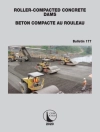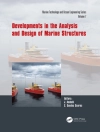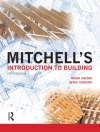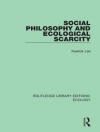The need to control and remove phosphorus (P) in discharges from waste water treatment facilities (WWTF) to prevent eutrophication of receiving waters is well known. Regulatory initiatives are further contributing to the addition of stringent P limits to discharge permits. Accordingly, many agencies are facing increasingly stringent standards of effluent P and as a result the effluent limit of 0.1 mg P/L total phosphorus (TP) or lower is being achieved. Since the reliable performance limit of enhanced biological phosphorus removal (EBPR) is commonly accepted at about 0.1 mg P/L in the dissolved form, these facilities will need to utilize tertiary chemical phosphorus removal (CPR) to reliably achieve limits lower than 0.1 mg P/L (ultra-low limits) (Pagilla and Urgun-Demirtas, 2007). The mechanistic basis for P removal using chemical precipitant addition is generally considered to be more than simple precipitation. The role of adsorption and/or surface complexation in removal of reactive or unreactive phosphorus to the already formed chemical precipitates or complexes has been reported. Omoike and Van Loon (1999) showed that the most likely mechanism involves sorption of P species on Al(OH)3(s) formed by Al salt addition to water for P removal, and further precipitation/complexation of P onto the Al hydroxyl precipitate for additional P removal. In tertiary P removal, usually a non-stoichiometric dose or several times stoichiometric dose of the precipitant is needed. The chemical precipitates formed upon addition of such high doses of chemical precipitant are likely to serve as nuclei for further aggregation of newly formed precipitates, thus enhancing the overall tertiary P removal. The excess precipitant added to the secondary effluent produces hydroxyl precipitates which could serve as adsorbents for additional P removal. It is well proven that alum sludge from water treatment plants have high capacity for wastewater effluent P removal depending on their structure and/or age of the sludge solids. The role of mixing, p H, contact time, precipitated solids concentration in the mixing tank, and feed secondary effluent characteristics could influence this process of tertiary P removal. The investigation of such variables and the process along with careful analytical measurements would explain the basis for precipitation/solids contact P removal from wastewater effluents. Such information could be used to enhance the process and optimize the operating conditions of tertiary P removal by chemical addition. This paper presents full scale and lab scale investigations of some of the above listed parameters on tertiary P removal with specific focus on role of precipitated solids in enhancing P removal and/or reducing the dose of precipitant to be added to achieve the desired P removal. The study was conducted at the Iowa Hill Water Reclamation Facility (WRF) and Farmers Korner WWTF in Breckenridge, CO, and at the Illinois Institute of Technology.
J. B. Neethling & Krishna Pagilla
Solids Role in Tertiary Chemical Phosphorus Removal by Alum [PDF ebook]
Solids Role in Tertiary Chemical Phosphorus Removal by Alum [PDF ebook]
Beli ebook ini dan dapatkan 1 lagi GRATIS!
Bahasa Inggris ● Format PDF ● ISBN 9781780406763 ● Penerbit IWA Publishing ● Diterbitkan 2014 ● Diunduh 3 kali ● Mata uang EUR ● ID 5760670 ● Perlindungan salinan Adobe DRM
Membutuhkan pembaca ebook yang mampu DRM












